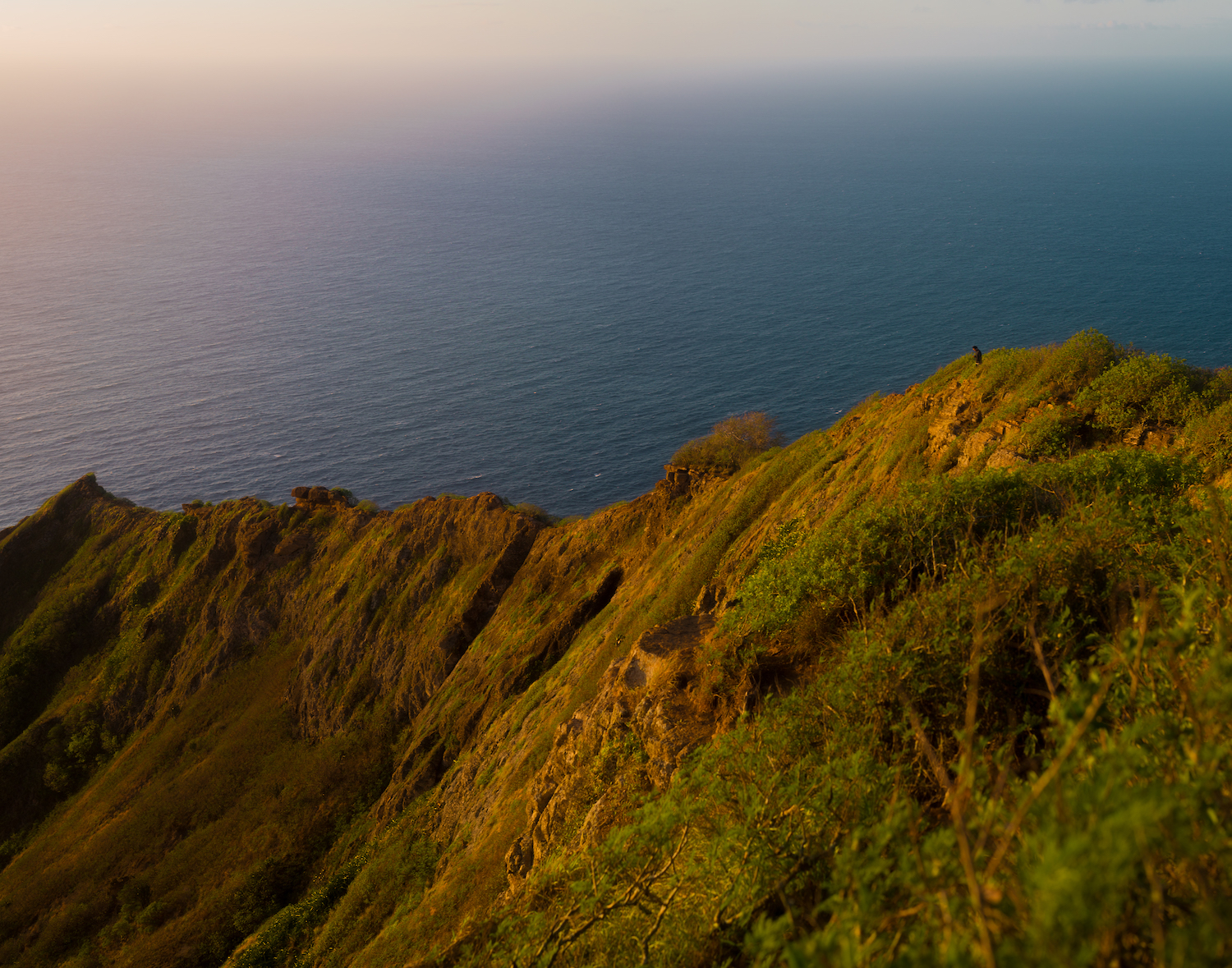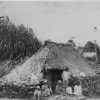E heluhelu i ka ʻōlelo Hawaiʻi (Read in Hawaiian)
From mountain peaks to sandy beaches, inoa ‘āina, or place names, exist for nearly every parcel of Hawai‘i. But a history of militarization and commercial development has often left these traditional names silenced. Can one truly honor Hawaiian places without acknowledging the important nature of inoa ‘āina?
“Alahula Pu‘uloa, he alahele na Ka‘ahupāhau.”
Everywhere in Pu‘uloa is the trail of Ka‘ahupāhau.
In the mid-20th century, Mary Kawena Pukui, co-author of Place Names of Hawai‘i, wrote that “Hawaiian place names are on everyone’s tongue.” Even if various pronunciations exist, with their meanings obscured or histories faded, these inoa ʻāina, or traditional place names, still exist in dialogue on maps, street signs, and in the public consciousness. Hawaiʻi is unique in this way because many other locations enduring colonial aftermath face the burying of their traditional place names beneath layers of re-inscription of foreign names that re-write the space. Yet, while it seems, at least to some extent, like our Hawaiian place names survive today, certain changes going on across Hawaiʻi caution us against taking their endurance for granted.
The saying above is an ʻōlelo noʻeau, a well-known adage among Hawaiians that is usually proverbial and didactic, often uttered as metaphor or allegory. Such adages speak of deities, people, places, events, and stories as references to Hawaiian lore, society, origin, and history. This one, about the trail in Pu‘uloa, reveals the extent to which shark deity Kaʻahupāhau is familiar with her home, such that it is, or at least was, her alahula, a well-known path.
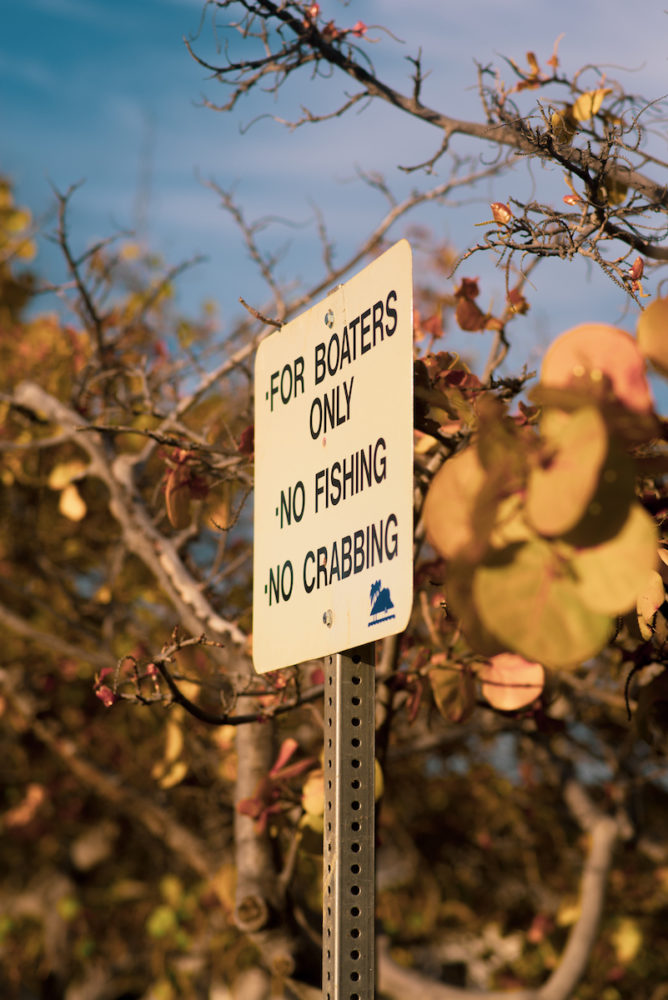

The name change from Puʻuloa to Pearl Harbor coincides with the Kuʻikahi Pānaʻi Like, or the Reciprocity Treaty of 1875, which afforded the United States tax-free access to the market of products such as sugar and other Hawaiian-grown goods. In turn, this treaty led to the acquisition of the lagoon and adjacent coastal areas by the United States, as well as the area’s conversion to an American naval base.
Many Hawaiians at the time opposed the treaty, expressing opposition to the impending large-scale American investment in local industry and the increasing control the United States was gaining in Hawaiʻi. Hawaiian political leader, lawyer, and patriot Joseph Nāwahī referred to it as “a nation-snatching treaty” as he defended against the cession of any sovereign land to foreigners, but by the end of 1884, modification of the treaty granted exclusive use of the harbor to America.
Such preemptive foresight on the Hawaiian Kingdom’s behalf is justified by the sociopolitical maneuvers that dispossessed Hawaiians of sovereign land for use by the military, secured the economic futures of the United States, and ultimately led to the overthrow and illegal annexation. The ongoing militarization and occupation of Hawai‘i has turned it into the tip of America’s spear, while U.S. economic stake-holding maintains its supremacy in the islands. If we correlate the shift in names to transfers of power throughout Hawaiʻi’s history, we see a pattern that should not surprise us: The name changes occur alongside some of the most egregious examples of an out-with-the-old re-inscription of a new order, in a new language, atop a repurposed space, anointed with a new name.


It is an unfortunate irony, then, that even though the ‘ōlelo no‘eau about Kaʻahupāhau endures, the place to which it refers has been largely modified and repurposed. Puʻuloa, now often called Pearl Harbor, is a wahi pana, a historical place, that survives today under mounting layers of development, militarization, and industrial use. In light of so much transformation, does Kaʻahupāhau still have her alahula, and if so, where is it?
Fortunately, the answer lies, at least to some degree, in the place name. Puʻuloa literally means “long hill” and delineates the geography and scope of Kaʻahupāhau’s abode. Like many other inoa ʻāina in the Hawaiian universe, Puʻuloa is topographical and encodes information about the physical features of the area from a feet-on-the-ground perspective. In different ways, Hawaiian place names capture localized knowledge, mapping the lived experiences of people upon the ʻāina and the intimate relationships that tie us to it. The names are constructive intersections between the cognitive, imaginative, and spatial dimensions by which kamaʻāina make sense of our world, arrange the events of our existence, and embed value and meaning in these islands.
“Kai pakī o Maunalua.”
The spraying sea of Maunalua.
Besides denoting topography, Hawaiian place names are informative in other ways, such as mapping natural resources. For example, place names that include “wai” indicate fresh water in that region. This is identified in Oʻahu’s Waiʻanae district, as are the ʻanae (mullet) that swim in the waters offshore so frequently that they deserve mention in the area’s name.
Some inoa ʻāina are spiritually or religiously significant. Mōkapu, a peninsula on the windward side of Oʻahu, is a shortening of “moku kapu,” which literally translates to “taboo district.” The name demarcates the sacred lands that belonged to Kamehameha I. There are also older accounts in primary sources that tell of Mōkapu as the location where the first humans were created to populate Hawaiʻi. Other inoa ʻāina commemorate significant events, such as Kohelepelepe, meaning “vaginal fringe,” which calls to mind when shapeshifter Kamapuaʻa, true to his kolohe nature, chased Pele across the archipelago, and her sister Kapo sent her ma‘i, her genitalia, to the top of Koko Crater to distract Kamapuaʻa and give Pele a moment to rest and escape. According to lore, Kapo’s maʻi left an indentation on the lip of Koko Crater that is still visible from Awāwamalu, also known as Sandy Beach.
The renaming process is the symbolic and figurative accompaniment to the physical and literal gesture of breaking ground.
In recounting these examples, we might recognize a problem: All the inoa ʻāina mentioned so far have English substitutes that usually supplant the original names, or have alternate pronunciations of the Hawaiian names that have become so widely used that the original sounds foreign, unrecognizable, and obscure. The local pronunciation of Waiʻanae usually omits the ʻokina and changes its meaning, even if inadvertently. After World War II, Mōkapu became referred to as “North Beach,” and it has since devolved into the “Marine Corps Base,” or its more convenient acronym, MCBH. Kohelepelepe and the crater atop which it lies have been lumped together and subsumed by today’s common misnomer, “Koko Head.” These examples are a handful among hundreds of shifts that have already occurred, and at this rate, they foreshadow many more to come.
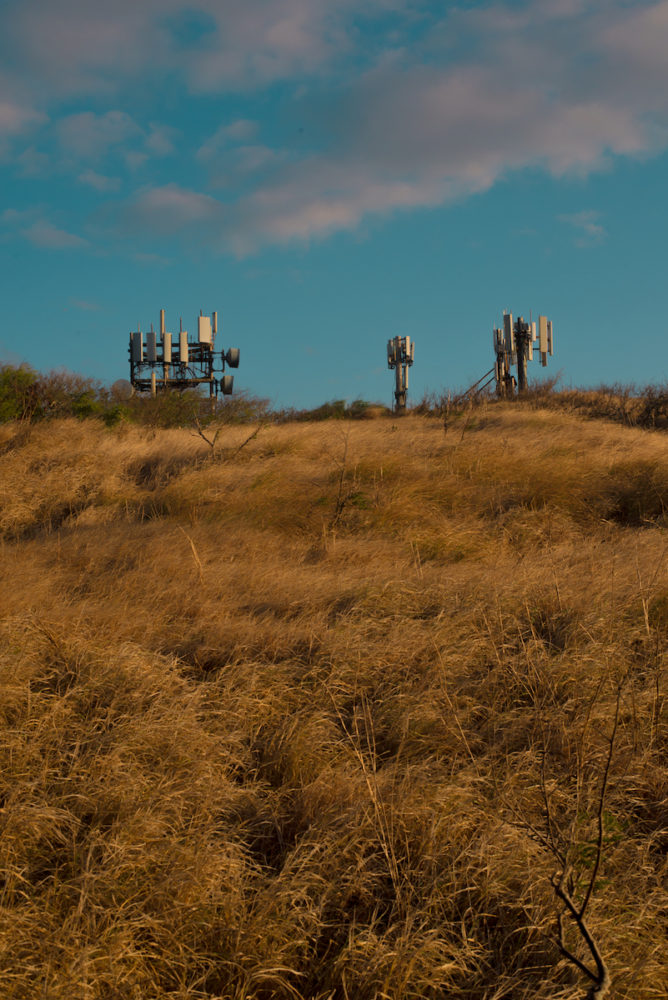

The erasure of Hawaiian names and the imposition of new and foreign ones is dangerous, even if the traditions by which the new names are created are similar to Hawaiian ones. The name Pearl Harbor is commemorative, but it celebrates American conquest, occupation, and militarization the same way MCBH does. The epithet “Sandy Beach” is topographical but hardly hearkens to a Hawaiian environment the way Awāwamalu does, referring to the shaded valley inland of the shoreline where ʻuala (sweet potato) was farmed. The name Kohelepelepe faded after Maunalua was massively developed into modern-day Hawaii Kai on the heels of Statehood in 1959, and the Koko Head “Stairs of Doom” further overwhelmed the name as the summit hike became a popular recreational activity and tourist destination.
We are witnessing the literal reinscription of Hawaiian space, with new and foreign names receiving privilege. When names are replaced, so are their senses of place, their networks of meaning, their value systems. The underlying reasons for such shifts are manifold but not always free of ulterior motives such as the claiming of territory. For some, the English name is easier to pronounce than the Hawaiian. In other instances, a new name could actually be more appropriate to fit the way the place has since been manipulated. But mostly, we should consider this reinscription as a distancing of our Hawaiian place names from us, and by extension, an imposition of new cultural norms, values, and meaning.
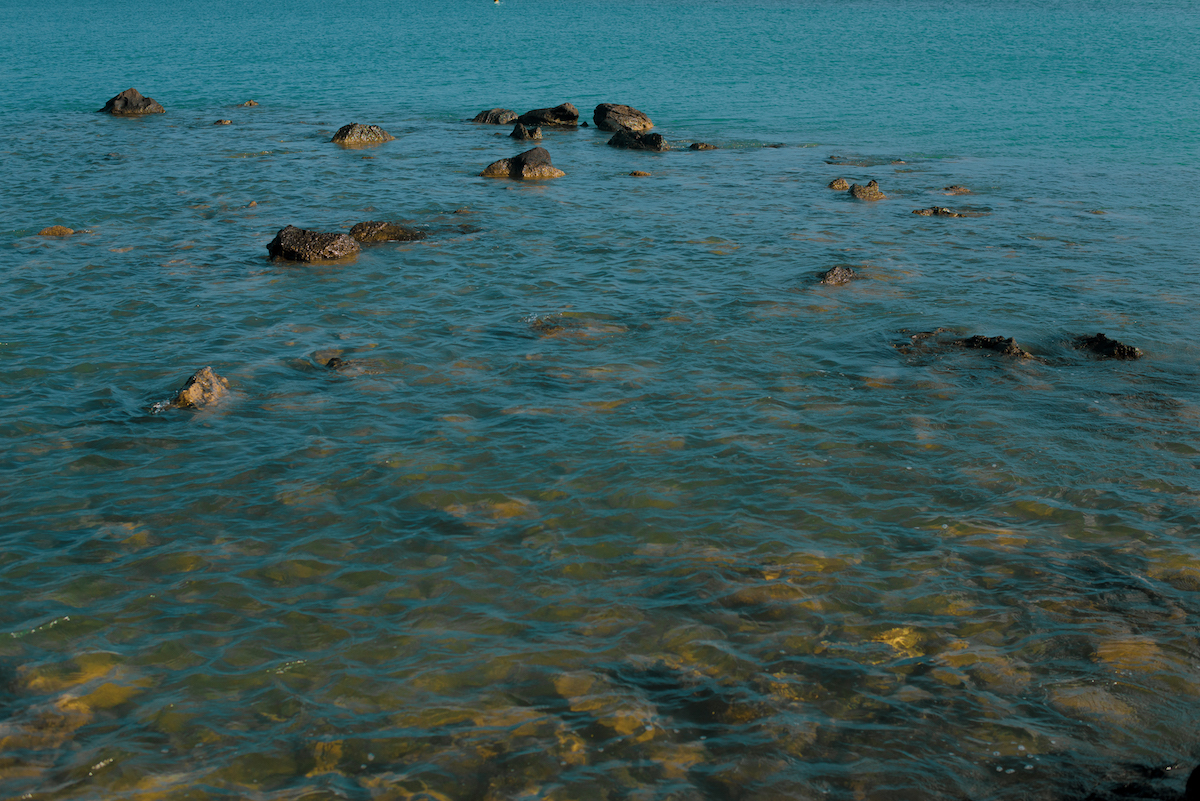

“Ola ka inoa.”
The name lives.
Beyond militarization and economization as motivations to stamp new names atop the land, other industries have also led to the establishment of exonyms, or names given by outsiders, at the expense of endonyms, the names given by locals. Residential development in the islands is often accompanied by the introduction of new names, such as the subdivisions of Pearl City, St. Louis Heights, and Chinatown, which have become widely used appellations over the last few decades. While these names are an inseparable part of local culture, they do overwrite older, traditional Hawaiian names that were in use prior to their development.
Usually, it is easy to spot an exonym—a foreign name, a non-Hawaiian designation—because, well, they are not Hawaiian. But sometimes, looks (and sounds) can be deceiving. Consider names like Hawaii Kai and Lanikai. Both are Hawaiian, in the sense that they use Hawaiian sounds in sequences that do not violate any orthographic rules. But their respective histories of place reveal collisions of tenure and best practice.


When names are replaced, so are their senses of place, their networks of meaning, their value systems.
As early as 1924, the name Kaʻōhao began to recede under processes of place
re-making and its development into Lanikai. In the 1960s, new Statehood legislation aided industrialist Henry Kaiser in his urban transformation of the area known as Maunalua into present-day Hawaii Kai, and his conversion trophy is that the former half of his last name (Kaiser) forms the latter half of his subdivision (Kai). The case for both endonyms is that they conceptualize the space through precontact perspectives: Kaʻōhao means “the tying” and maps a noteworthy historical event where two women were tied together at the neck after losing a game of kōnane; Maunalua has “Ke-ahu-pua-o-Maunalua” (now Koko Marina) whose traditional name translates to “The Shrine of Young Mullet of Maunalua” and maps the region’s natural resources. Their ambiguous exonyms, however, are semantically neither here nor there, and not only obfuscate the environmental history, but their English translations also violate some linguistic rules. Lanikai, for example, is incorrectly translated as “heavenly sea”—with lani, meaning heavenly, preceding kai, meaning sea—except in ʻōlelo Hawaiʻi, adjectives follow nouns. Such tensions between traditional stewardship and contemporary planning serves as a micro-level metaphor for the macro-level coexistence among us living in Hawaiʻi.
To change the place name drapes a veil over it. The new names are stanchions that usher in a modern era of place-making, marking a new purpose for these places by resetting their history of habitation and use. The renaming process is the symbolic and figurative accompaniment to the physical and literal gesture of breaking ground. Unsurprisingly, there is great dissimilarity in the stewardship of these new places, such that the modern and imposed nomenclatures seem to prefigure their transformation.
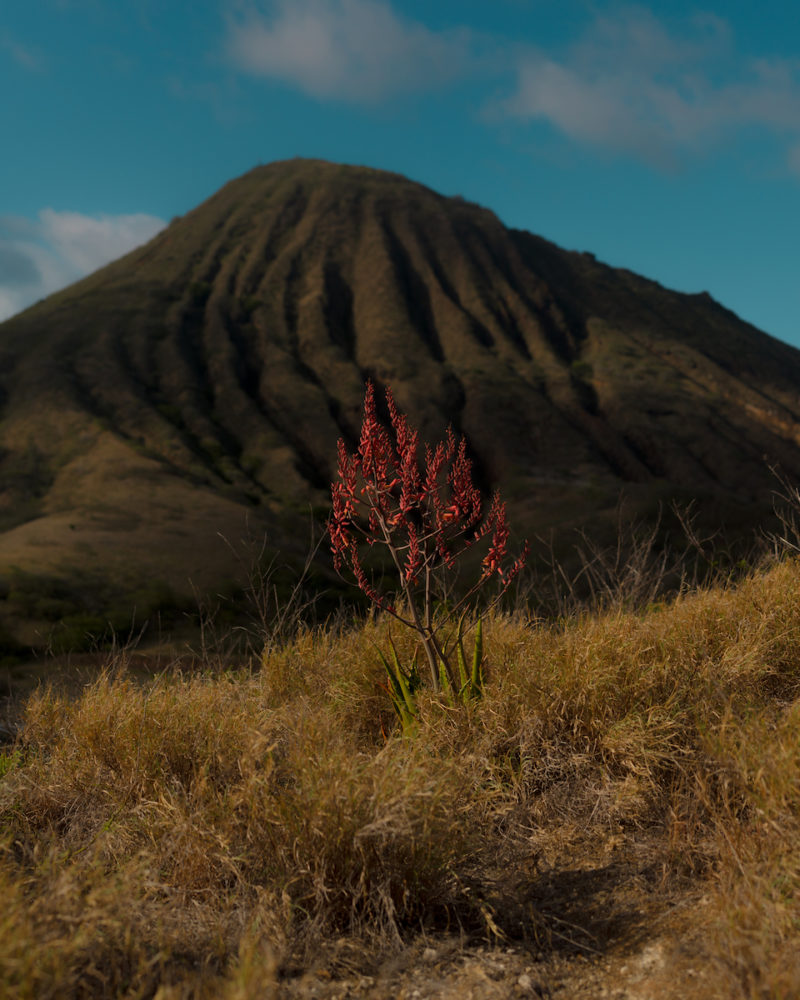

But there is hope in the small victories of traditional place names being reclaimed by local communities. For instance, in 2017, Lanikai School changed its name to Kaʻōhao School to identify the area’s name before development began in 1924. There also seems to be a push in the media to standardize the spelling of place names while including proper diacritic markings. All around O‘ahu, signage identifying the ahupuaʻa land divisions of larger moku districts is now visible, a project so successful that similar ones have begun on neighbor islands.
We know what makes Hawaiʻi beautiful and unique. We know the reasons behind the popular “lucky we live Hawaiʻi” notion. We know the values that make Hawaiʻi meaningful to us—our connection to our home and its history, to our shared heritage, and to our sense of place. Deeply embedded in all those things are our place names. It is up to us to know them, speak them, and pass them on.

